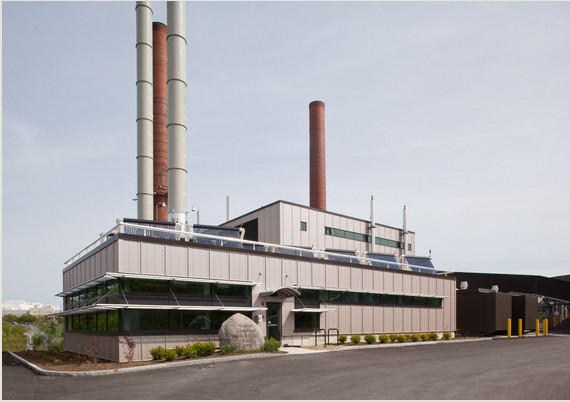Today’s energy news covers 3 major areas of interest: first, today we attended NYSERDA’s Combined Heat and Power (CHP) Expo–we will talk about our observations about CHP; second, what’s happening with natural gas in New York City… specifically, new supply; and finally, we like to focus on something fun on Fridays. This week, we’re thinking about art and beauty. How does this all connect? Read on…
Combined Heat & Power
The NY State Energy Research & Development Authority (NYSERDA) is placing a great deal of time, effort and resources on getting Combined Heat & Power (CHP) implemented broadly in NY State. ACEEE (the American Council for an Energy-Efficient Economy) defines CHP in this way:
Combined heat and power (CHP) systems, also known as cogeneration, generate electricity and useful thermal energy in a single, integrated system. CHP is not a technology, but an approach to applying technologies. Heat that is normally wasted in conventional power generation is recovered as useful energy, which avoids the losses that would otherwise be incurred from separate generation of heat and power. While the conventional method of producing usable heat and power separately has a typical combined efficiency of 45 percent, CHP systems can operate at levels as high as 80 percent.
Just today, NYSERDA hosted a CHP Expo in the New York Times building in Manhattan. One of our Megawatt Hour customers attended the Expo and is in the process of evaluating the possibility for CHP in their building. This technology is not new– it has been around for quite awhile– in fact, the Pearl Street Station in New York was the country’s first commercial power plant, and was a combined heat and power plant. There is a great deal of elegance and economic opportunity in these systems– cogenerating can make a lot of sense for buildings across the country, but particularly in areas like Manhattan where electricity prices can be high. Savings on electricity costs tend to drive the economics of these installations. CHP technology has evolved and improved over the last 15 years. Both reciprocating engines and turbines can make sense, depending on the project size and requirements. CHP can benefit buildings and utilities alike– supporting the implementation of these systems is good public policy. According to ACEEE’s recent research:
CHP is the most efficient way to generate electricity today. It offers tremendous benefits to the utility systems in which it is located. These include:
- Avoided or deferred investments in distribution and transmission systems, as seen in a strategically sited CHP system in New York City that helped Con Edison defer a major distribution system upgrade;
- Increased system resiliency, as seen in the tremendous benefits CHP systems provided during recent storms and hurricanes; and
- Reduced costs of energy resources, as seen in Massachusetts where utilities recently saw dramatically reduced lifetime costs of their energy efficiency resources—from $0.022 per kWh to $0.016 per kWh—due largely to new CHP.
In order to get a clear view of what the project opportunity is, and to evaluate the economic benefit, it is critical to get a reliable forecast of electricity costs. Do not simply look at historical costs, make sure you have a market-based forecast. This information provides you with an indication of payback periods and can also help you monitor savings once the project is operating.
Bottom line for businesses: CHP has become a viable and cost-effective option for buildings. There are significant financial incentives available for project implementation. The first step in the process is to ensure you know both your historical electricity and heating costs, as well as a forecast of expected costs.
New York’s New Natural Gas Pipeline
As Bloomberg Businessweek reported earlier this month in its article titled “Cheap Natural Gas Hits New York City”, Spectra Energy opened a new natural gas pipeline into New York as of November 1st, 2013. Here’s a quote from the article:
“This is a huge deal, a total game-changer,” Phil Flynn, a senior market analyst at Price Futures Group in Chicago, says of Spectra’s new pipeline, the first to be built to New York in 40 years. “The New York region is woefully under-served but this helps. Consumers are finally going to start seeing the benefits of cheap natural gas show up in Manhattan.”
While this will make a big difference to New York City consumers, it will not necessarily result in entirely cheap and plentiful supply of gas– and it is unlikely to eliminate volatility in gas and electricity costs. In fact, just this past week we’ve seen significant weather-related volatility in New York markets. (See forward curve chart, below.)
Bottom line for Businesses: The opening of a new natural gas pipeline is good news for energy consumers in New York City. At the same time, consumers across the City have been converting from fuel oil to natural gas. In addition, New England will still experience supply constraints. Don’t expect the new pipeline to eliminate price volatility.
The Art in Energy
This week we’re thinking about what it takes to make something beautiful. While we may not think about it often, all our work should be a work of art– done with care, and consideration. For those of you who are like us– we make our art and magic in less traditional ways– by being open and transparent about pricing and markets, by building a great, simple information platform that tells a story, by doing what we promise to do for customers, by fulfilling our commitments. Well, for us, sometimes we need something more. If you’re in or around New York City, go out this weekend and get access to beautiful visual art at The Drawing Center, or The Frick Museum (if you can get tickets) or the Rubin Museum of Art. Tell us how art and beauty impact your work?
Bottom Line for Businesses: What role do creativity and beauty play in your work?


